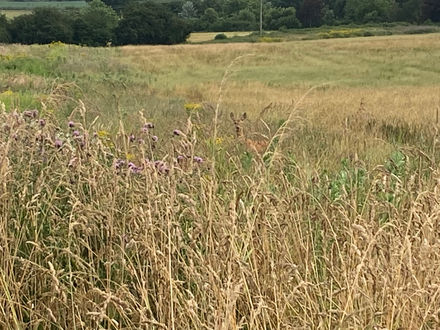

Wildlife Management on Farms And Small Holdings
The South East and South West of England are facing an urgent need to manage and control their wildlife populations, particularly deer, to prevent a major disruption to agricultural production. Species such as roe deer, muntjac and fallow deer can cause extensive damage to crops and pastures, leading to significant financial losses for smallholdings and farms alike. For centuries, deer have been a natural part of the British countryside, providing a source of food and recreation for people. But in recent years, their numbers have increased dramatically, and they are now a common sight in many areas of the South East and South West, where smallholdings and farms are particularly vulnerable to the damage they can cause.
Roe deer are one of the most widespread and abundant species in the region, and they can cause a considerable amount of damage to crops and pastures. Their diet includes a range of different plants, and they graze on grass and other vegetation, leaving bare patches in the fields. This can lead to crop failure, as the plants are unable to regenerate and regrow, leading to reduced yields and financial losses. The same can be said for muntjac, a smaller species of deer which is becoming increasingly common in the area. Fallow deer are another species that can cause significant damage to smallholdings and farms. They are larger than roe and muntjac deer, and they have a more aggressive grazing behaviour, eating large amounts of vegetation in a short amount of time. This can have a devastating effect on crops, with entire fields stripped bare in a matter of days. They can also cause damage to fences and hedgerows, which can be costly and time-consuming to repair.
The most effective way to tackle the issue of deer damage is to prevent it from occurring in the first place. To do this, farmers and smallholders can take a range of steps, from creating physical barriers such as fencing and hedgerows to using deterrents such as noise makers and scent dispersers. These measures can help to discourage deer from entering fields and pastures, reducing the risk of damage to crops and other vegetation. It is also important for farmers and smallholders to manage deer populations through population control.
This can be done through hunting and culling, although this is not recommended in areas where deer are already a problem. In addition, farmers and smallholders should be aware of the signs of deer damage, so they can take steps to prevent it from occurring or take action if it does. In conclusion, the South East and South West of England are facing a pressing need to manage and control their wildlife populations, in particular deer, to prevent major disruption to agricultural production. Through preventative measures, deer population control and being aware of the signs of deer damage, farmers and smallholders can help to protect their crops and pastures, and minimise the losses caused by deer.
.png)













